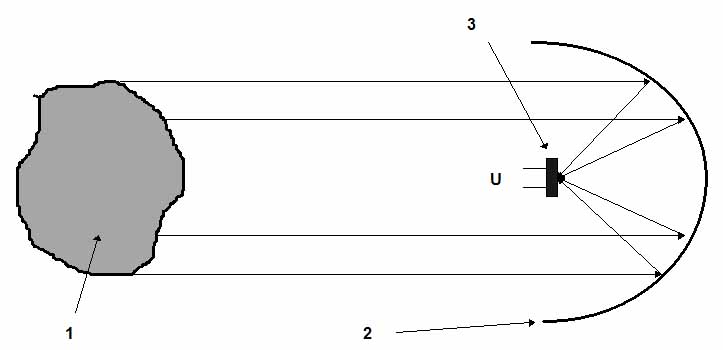Radiation pyrometers, being very simple and cheap, use an exponential relationship between a total emitted EMR energy and given temperature. In radiation pyrometers (see Fig. ) EMR energy emitted at infrared (2.5 < l < 20 mm) to visible wavelengths (0.42 < l < 0.7 mm) from an object 1 is focused by a spherical reflector 2 on a series of micro-thermocouples attached to a blackened platinum disc 3. The radiation is absorbed by the disc, which temperature is increased, so does thermal electromotive force U developed by the series of thermocouples.
This thermal electromotive force is proportional to the temperature of hot junctions of thermocouples, and, finally, to the temperature of the object 1. The advantage of these pyrometers is that their operation slightly depends on the wavelength.
Figure . A total radiation pyrometer
The lower limits for radiation pyrometers vary from 0 to 600 °C, the upper limits vary from 1000 to 1900 °C. The accuracy varies from ±0.5 to ±5 K, depending on cost. They are widely used for temperature measurements in metal production facilities, glass industries, semiconductor processes, etc.
